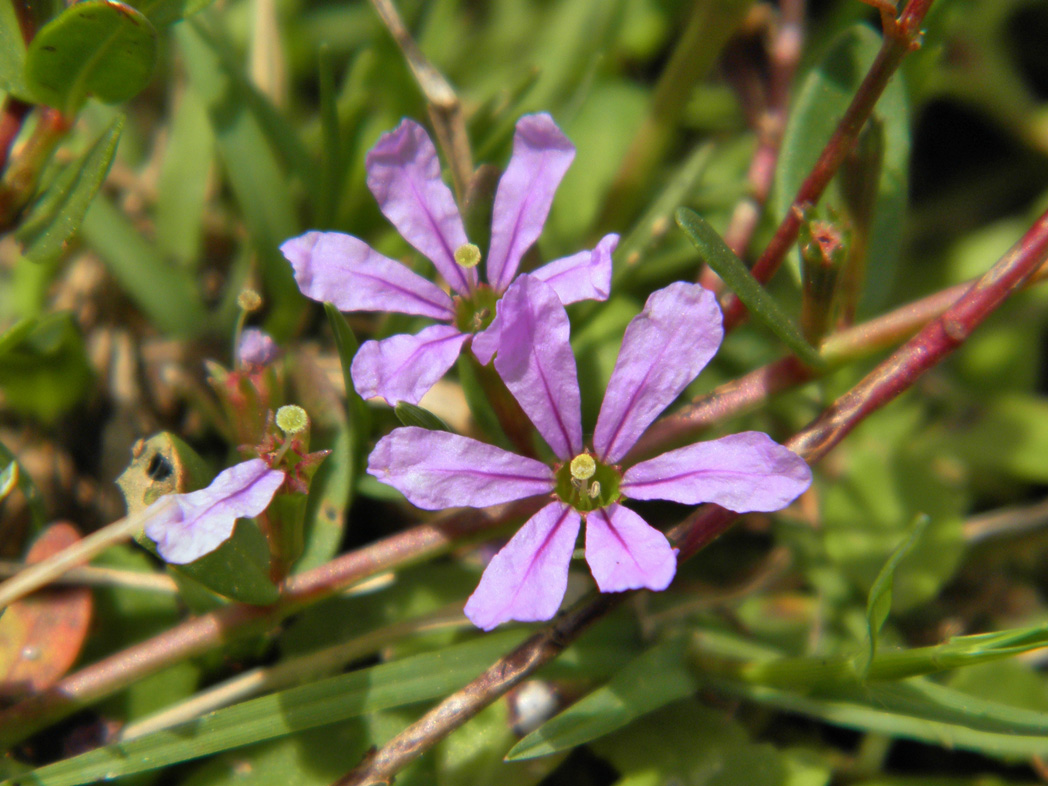Florida loosestrife
Florida loosestrife (Lythrum flagellare) by Jason Sharp CC BY-NC-SA 2.0. Click on terms for botanical definitions. View post as a PDF
Florida loosestrife is a state-listed endangered wildflower endemic to the west-central peninsula. This low-growing, creeping wildflower can be found along wet prairie edges, pond margins and moist roadsides. It typically blooms from February through June but is often overlooked because of its diminutive stature and tendency to blend in with the plants among which it grows.
Florida loosestrife’s small (less than ½ inch in diameter), purple to pinkish flowers have six crinkled petals, each with a dark purple midvein. Calyces are six-lobed and partially fused, forming a tube. Leaves are sessile and oval to elliptic with round or cuneate bases. Leaf arrangement is usually opposite. Stems are multi-branched and purplish to reddish. New stems may be erect or decumbent, while older stems are prostrate. Fruit is a dehiscent capsule.
The genus name Lythrum comes from the Greek lythron, meaning “gore” or “blood,” and may allude to the flower color of some species. The species epithet flagellare is from the Latin flagellum, literally meaning “whip” or “lash,” and loosely translating to “arm,” “tentacle” or “vine shoot.” It refers to the plant’s sprawling habit.
Family: Lythraceae (Loosestrife family)
Native range: Coastal counties from Hernando south to Collier; also Orange, Hardee, Desoto, Okeechobee, Glades and Hendry counties
To see where natural populations of Florida loosestrife have been vouchered, visit florida.plantatlas.usf.edu.
Lifespan: Perennial
Hardiness: Zones 9A–10B
Soil: Moist to wet soils
Exposure: Full sun
Growth habit: Sprawling; may form mats in areas that have been mowed
Florida loosestrife is not commercially available. Visit a natural area to see it.
For more information on other Lythrum species, see:

